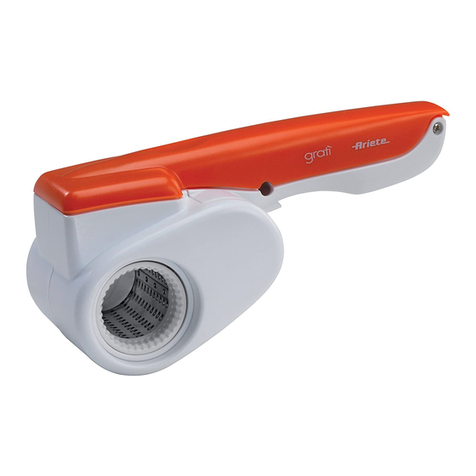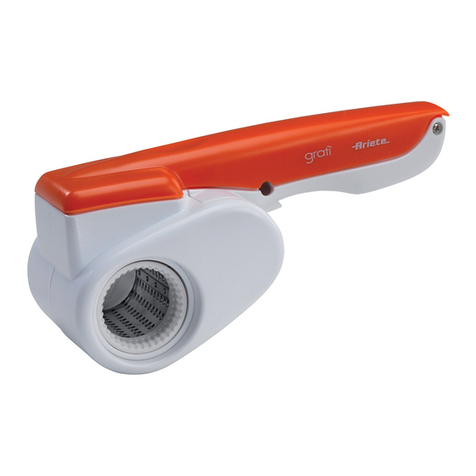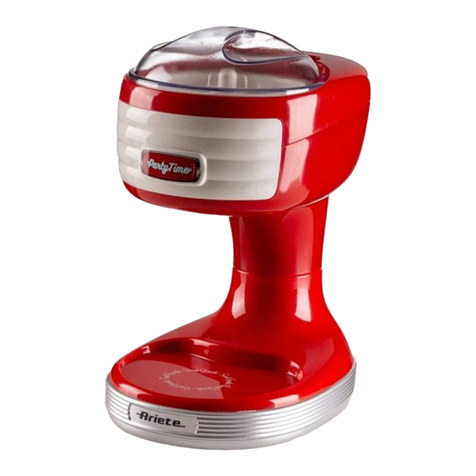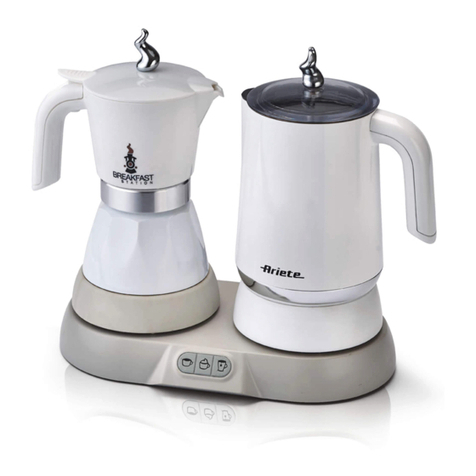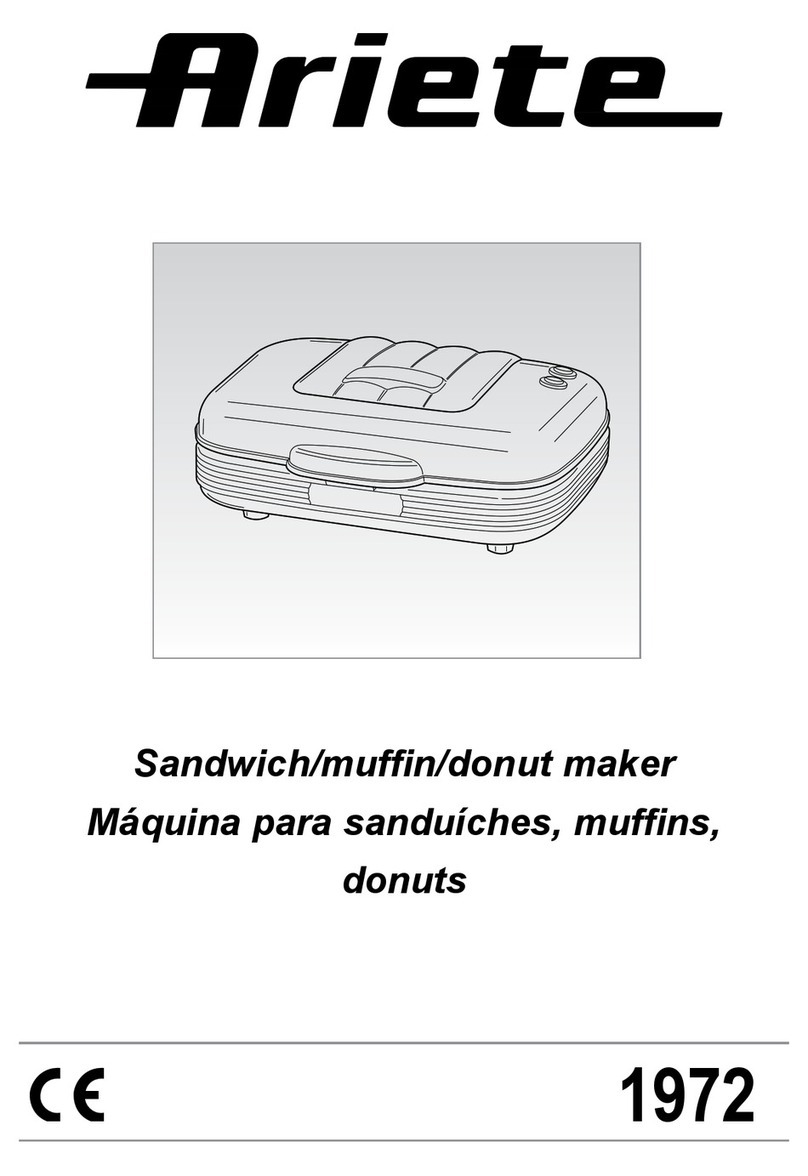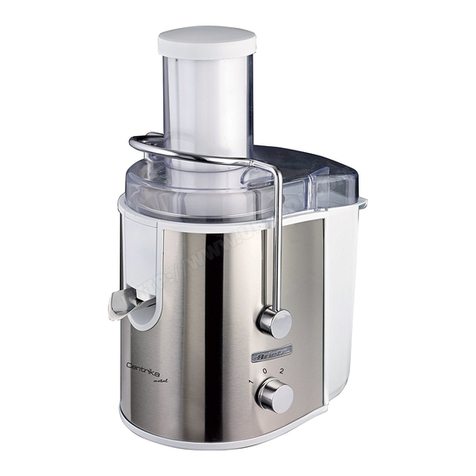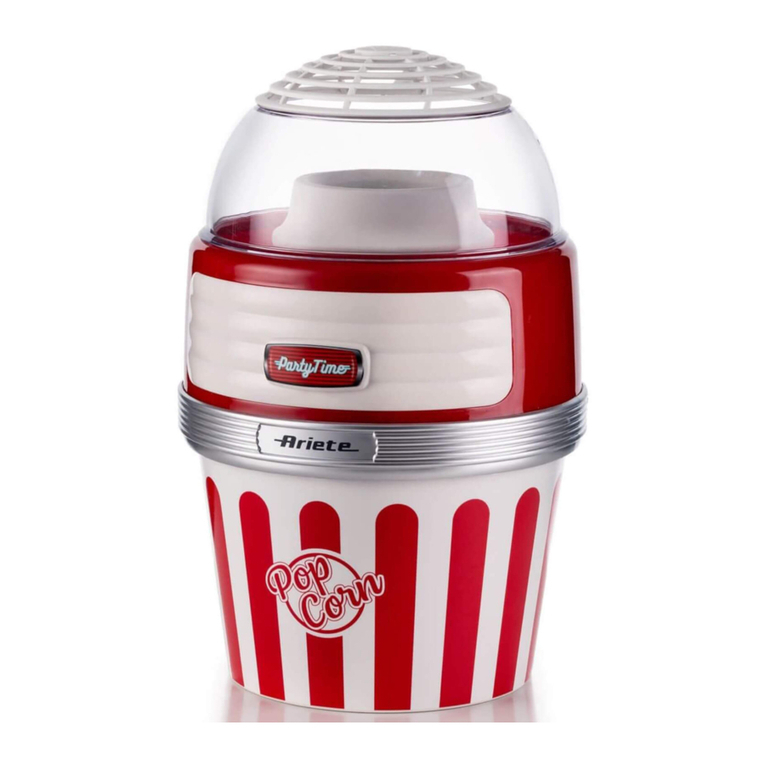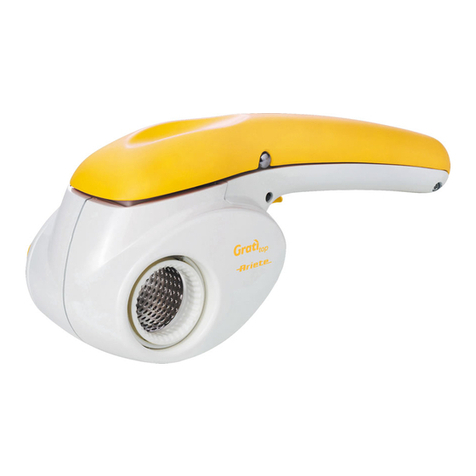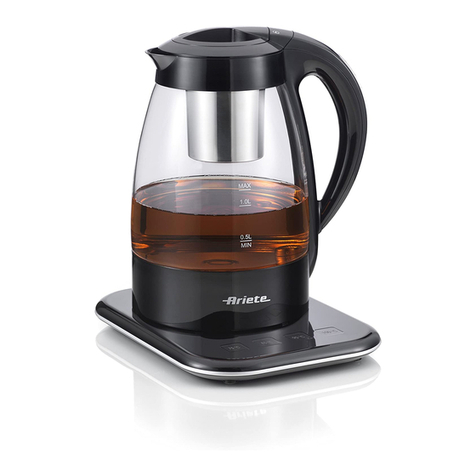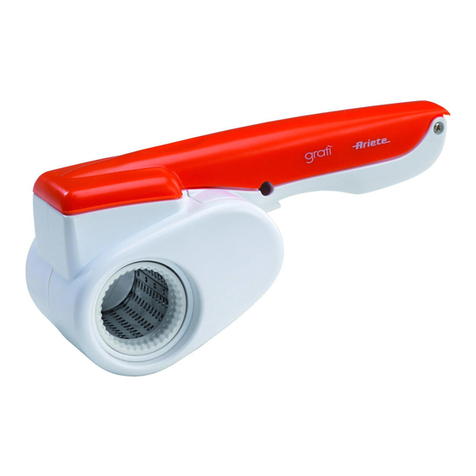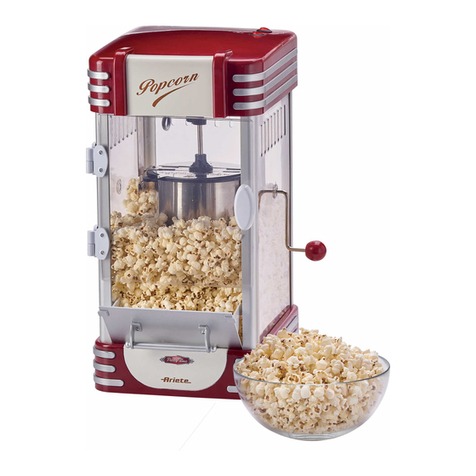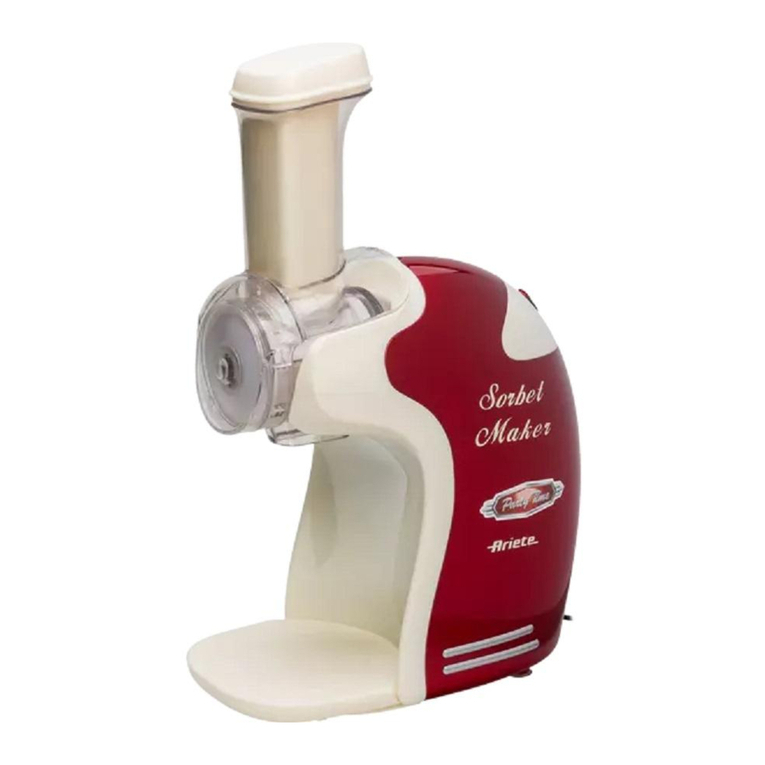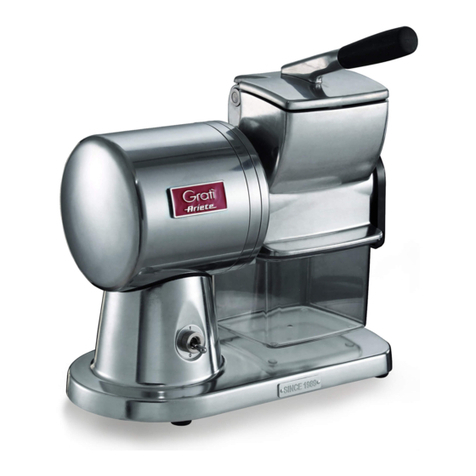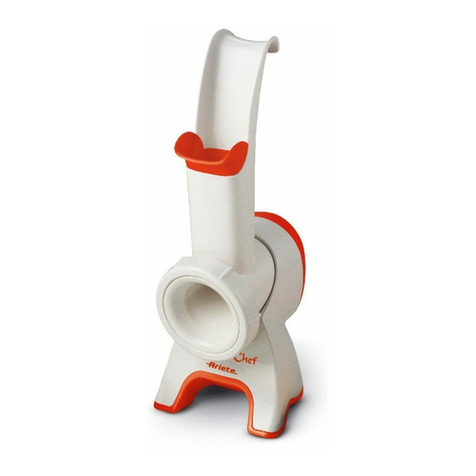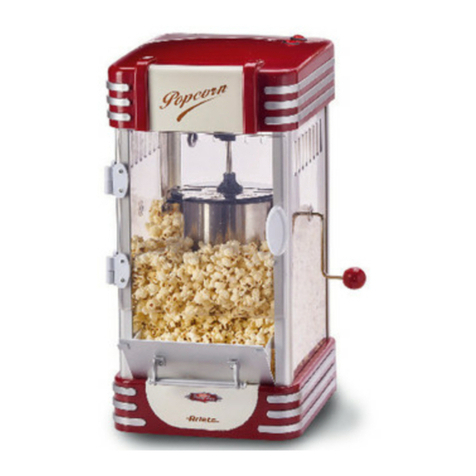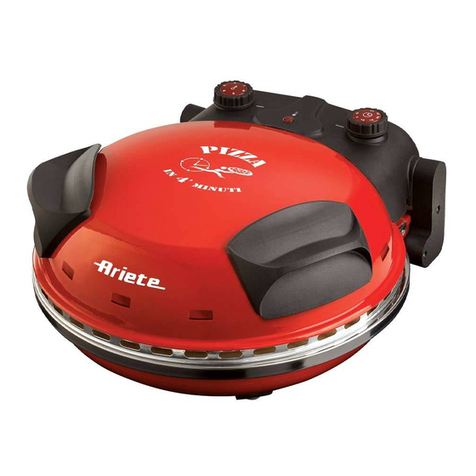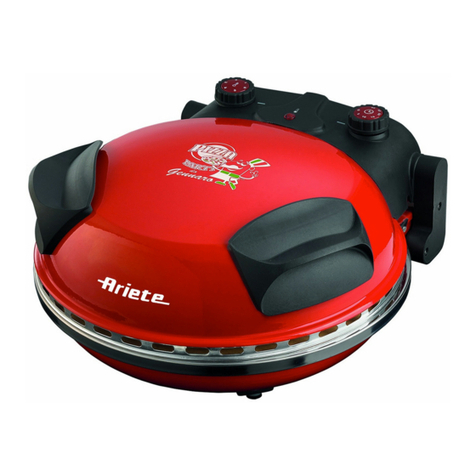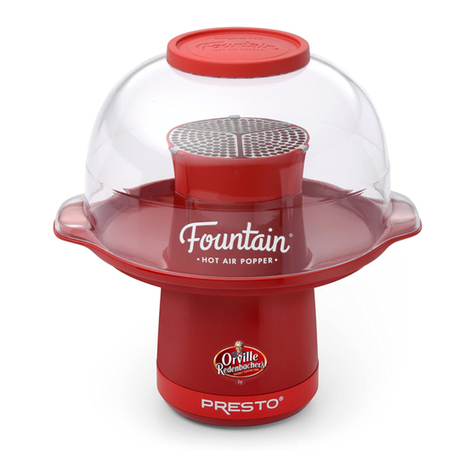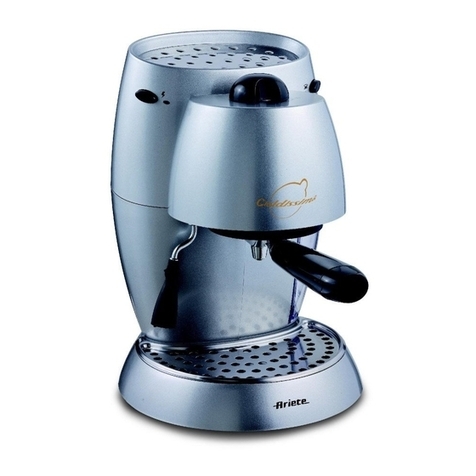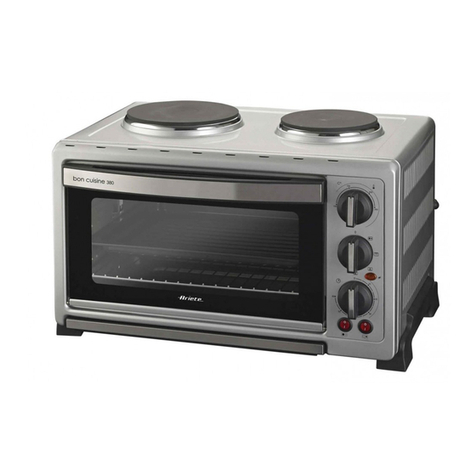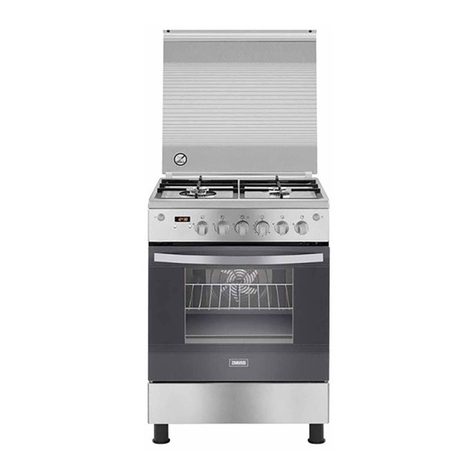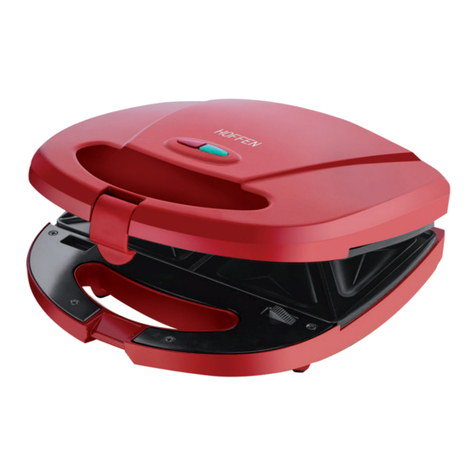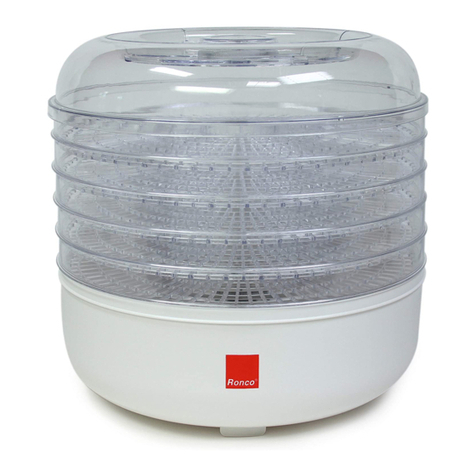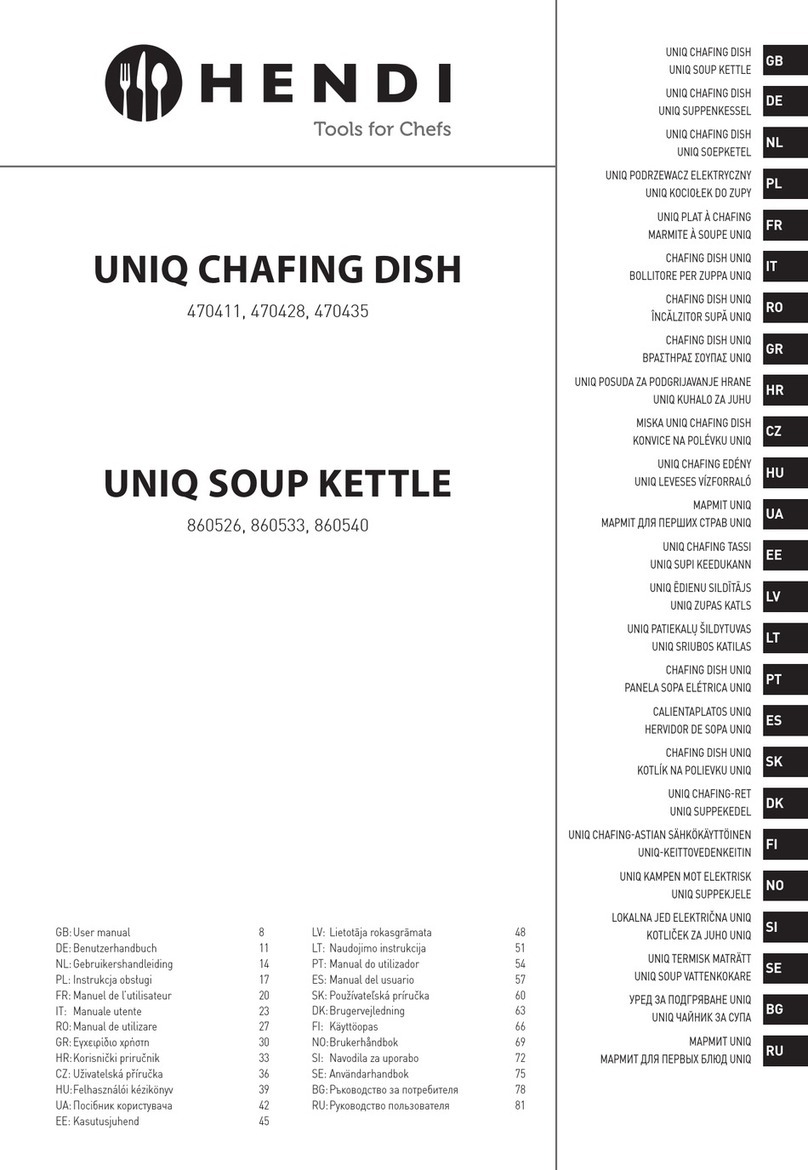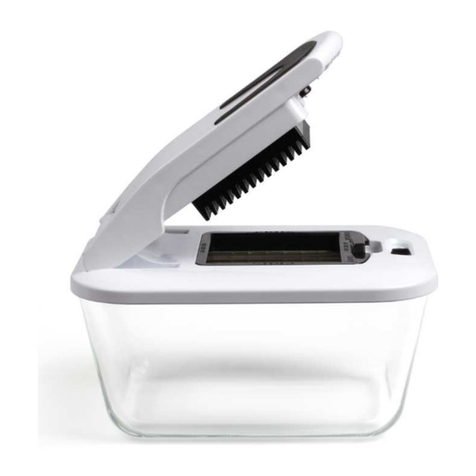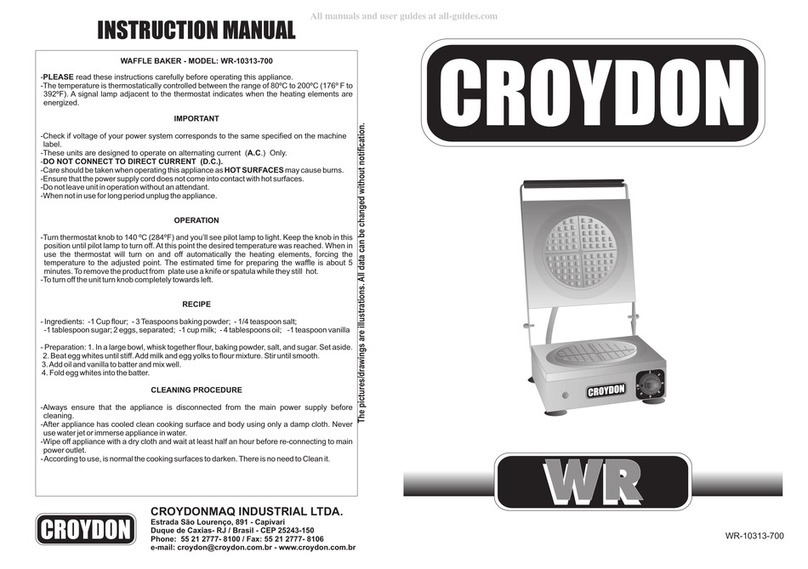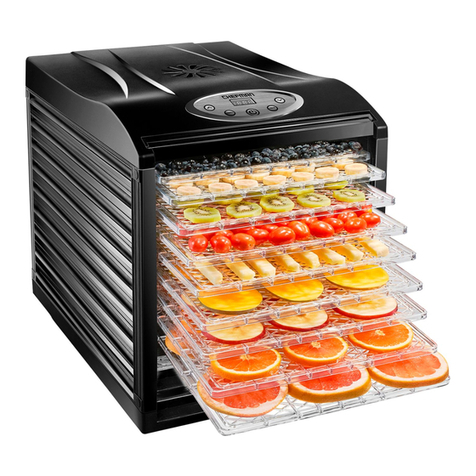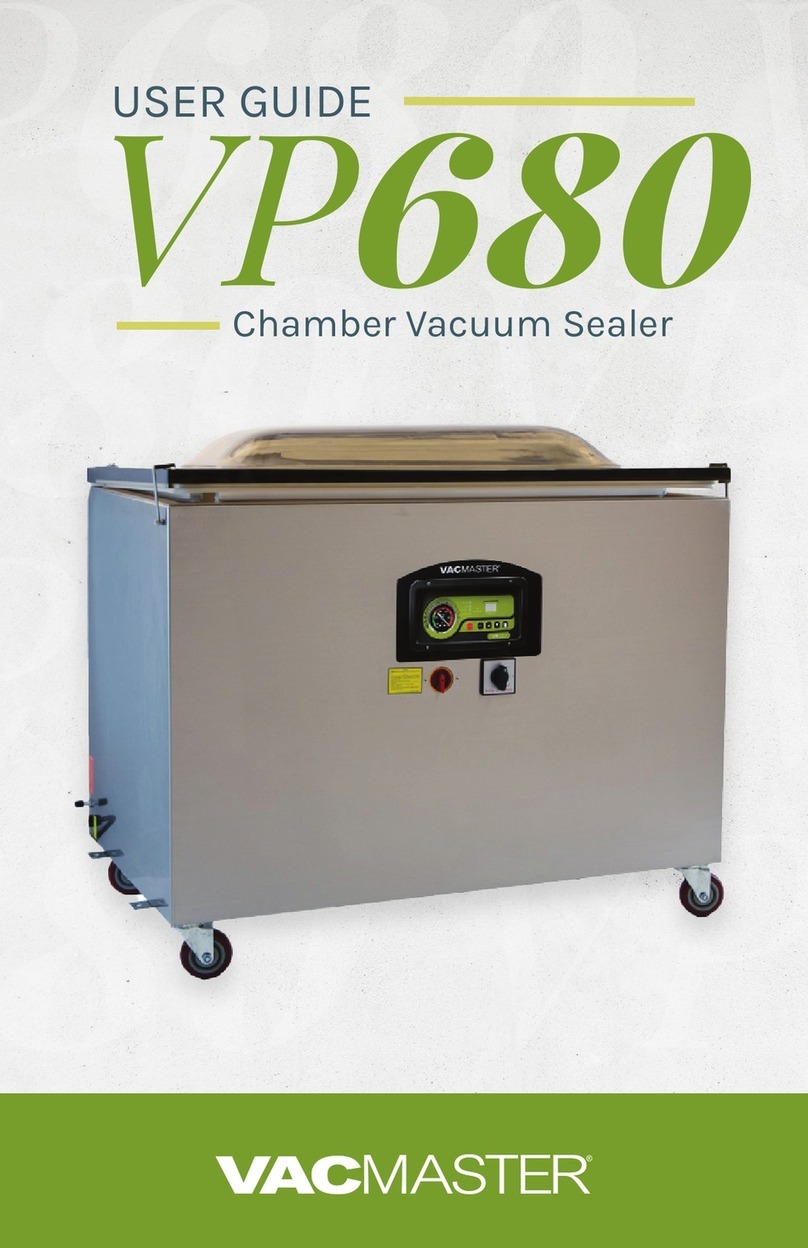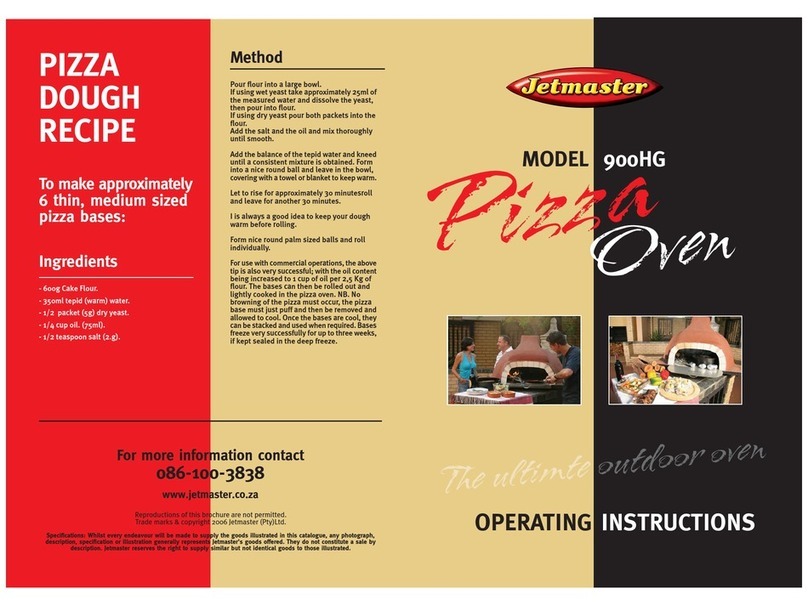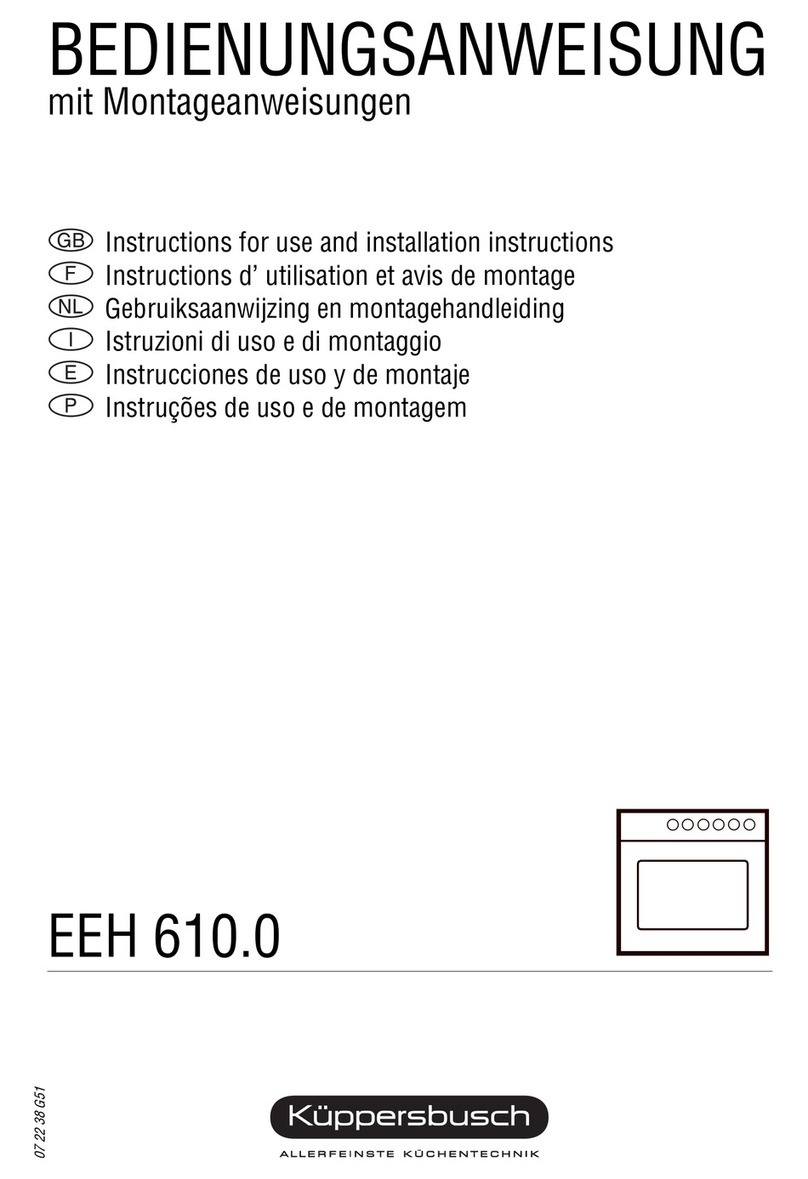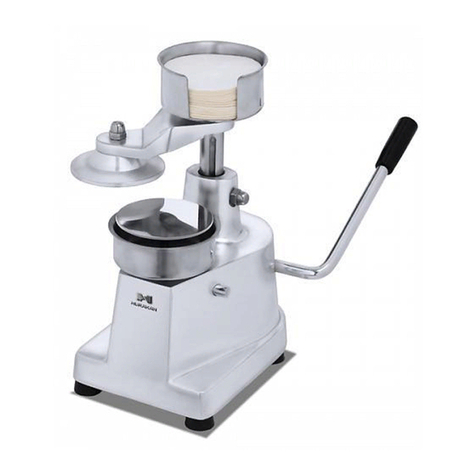
ISTRUZIONI PER L’USO
CAPACITà E VELOCITà MASSIME CONSENTITE
1,3 KgCapacità massima di farina da non superare in nessun caso
2 KgCapacità massima assoluta da non superare in nessuno caso
(per maggiori dettagli riferirsi al paragrafo RICETTE)
velocità 3Velocità massima consentita con la frusta per impastare (F)
velocità 4Velocità massima consentita con la frusta per mescolare (D)
velocità 6Velocità massima consentita con la frusta per montare (E)
AVVERTENZA: Dopo aver tolto l’apparecchio dalla confezione, al primo uso lavare accurata-
mente con acqua e sapone neutro tutte le parti che vengono in contatto con alimenti.
- Premere il pulsante (B) e contemporaneamente sollevare il braccio (A) fino a sentire uno scatto di
bloccaggio (Fig. 2).
- Inserire la ciotola (H) sulla base del corpo dell’apparecchio (G) e ruotarla in senso orario per
bloccarla (Fig. 3).
- Inserire il coperchio paraschizzi (N), contro la fuoriuscita di liquidi, sul braccio (A), ruotandolo fino al
completo bloccaggio (Fig. 4).
- In base al tipo di alimento da lavorare, inserire la frusta sull’asse motore del corpo dell’apparecchio
(G) (Fig. 5), e ruotarla in senso antiorario per bloccarla in modo che il perno ricavato sull’asse
motore si alloggi perfettamente nell’apposita asola sull’attacco della frusta (Fig. 6).
L’apparecchio dispone di tre tipologie di fruste:
Frusta per montare (E): per montare uova, panna, pastelle, pan di spagna senza grassi, meringhe,
cheesecake, mousse e soufflé. Non utilizzare il frullino nel caso di miscele dense come burro e
zucchero, potrebbero danneggiarla.
Frusta per impastare (F): per impasti lievitati come pane e pizza.
Frusta per mescolare (D): per preparare torte, biscotti, pasta frolla e simili, glassa, ripieni, bigné e
purea di patate.
- Sempre con il braccio (A) sollevato, versare gli ingredienti nella ciotola (H).
- Abbassare nuovamente la leva (B) e contemporaneamente il braccio (A) (Fig. 7).
-
Inserire la spina nella presa di corrente ed accendere l’apparecchio ruotando la manopola (C) sulla velo-
cità “1”. Aumentare la velocità poi in base alla necessità o secondo quanto riportato nella ricetta specifica.
L’apparecchio è dotato anche del funzionamento ad impulsi ruotando la manopola (C) in senso antiorario
sulla posizione “P”. L’utilizzo ottimale avviene premendo per un brevissimo tempo (2/3 sec.).
- Per ottenere un risultato più omogeneo, spegnere l’apparecchio, staccare la spina dalla presa di
corrente e sollevare il braccio (A) come descritto in precedenza. Con l’aiuto di un’apposita spatola
portare verso il centro gli alimenti depositati sulle pareti della ciotola (H).
- A lavorazioni concluse o nel caso si decidesse di cambiare il tipo di frusta, spegnere l’apparecchio
ruotando la manopola (C) sulla posizione “0” e staccare la spina dalla presa di corrente; alzare
il braccio (A) come descritto in precedenza e rimuovere la frusta estraendola con cautela verso
l’esterno, dopo averla sbloccata ruotandola in senso orario.
- Rimuovere la ciotola (H) ruotandola in senso antiorario.

